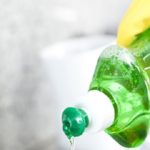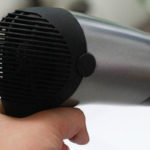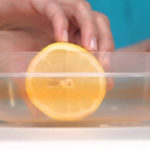Use toothpaste
Toothpaste has the ability to remove plaque and calcium deposits easily, and it is also something that is available in every household. So you can try using toothpaste for your kitchen faucet right away.
The materials needed include:
– 1 clean cloth
– 1 soft-bristle brush
– 1 tube of toothpaste
Procedure: Apply toothpaste to the area that needs cleaning and wait for about 10 to 15 minutes. Then use the brush to clean off the dirt. After that, use a damp cloth to wipe it clean again as toothpaste adheres very well.
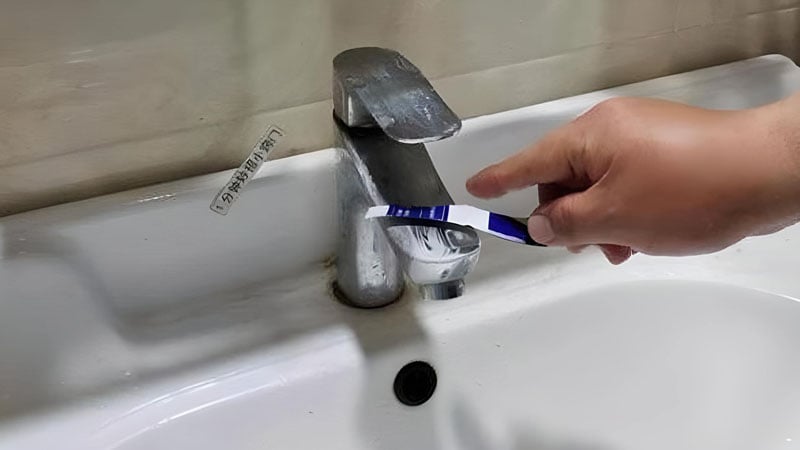
Use baking soda and lemon
Lemon has a high antibacterial and antiseptic effect due to its acidic nature, combined with baking soda it will create a mixture that has a very strong cleaning effect.
This mixture is widely used in cleaning household items, including kitchen faucets, where baking soda is also very effective, as well as induction cooktop surfaces, stone surfaces, etc.
The materials needed include:
– 3 tablespoons of baking soda
– 3 lemons
– ⅓ cup of warm water
– 1 clean cloth or sponge
Procedure: Cut the lemons in half and squeeze out the lemon juice. Then mix it with baking soda and warm water and stir well to dissolve. Use a cloth or sponge to clean the faucet.
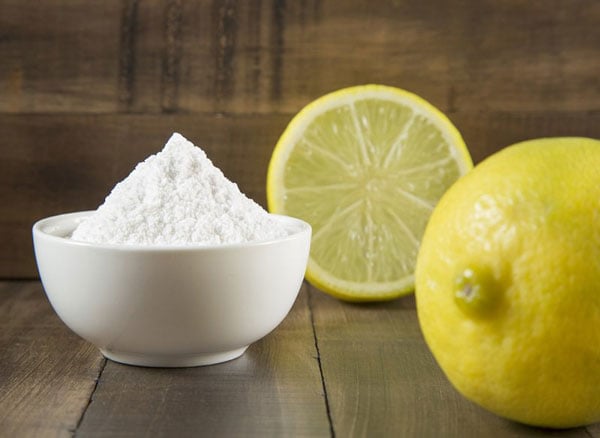
Use coca cola
Coca cola not only serves as a refreshing drink, but it also has a very effective cleaning function. The CO2 gas in the water acts as a strong catalyst in removing dirt from the faucet, and rust stains on any surface where you pour coke will become much easier to clean.
The materials needed include:
– 1 brush
– 1 can of coca cola
Procedure: Simply pour a small amount of coca cola over the faucet and wait for about 5 to 10 minutes, then use a brush to clean it thoroughly. Rinse with clean water and you will see noticeable results.
Use vinegar
Vinegar is commonly used for cleaning household items. It is a type of natural cleaning agent that is easily accessible and environmentally friendly. However, it also needs to be used properly to achieve the best results.
The materials needed include:
– ½ cup of warm water
– 1 cup of vinegar
– 1 sponge
Procedure: Dilute vinegar with water at a ratio of 2:1, then use a sponge soaked in the solution you just made to clean the stainless steel faucet. Clean off any dirt, stains, and rinse the faucet with clean water.
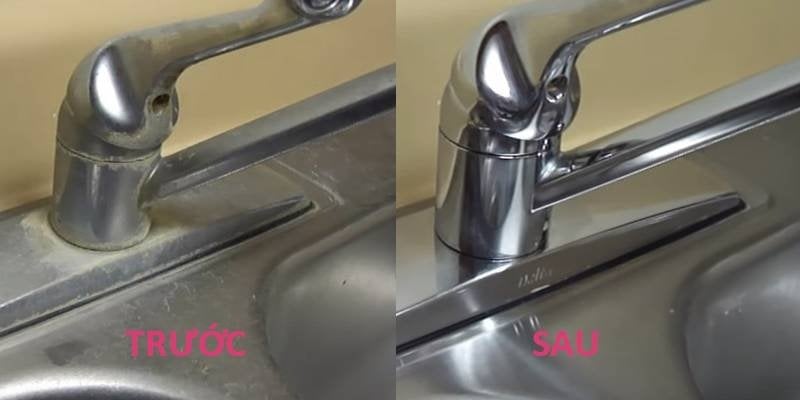
Use flour
The materials needed include:
– 1 brush
– 1 cup of flour
Procedure: Simply pour the flour onto the surface that needs cleaning and wait for about 10 minutes. Then rinse the stainless steel faucet with clean water.
Use a cleaning solution
If the above substances are still too gentle for the dirt in your household, then at this point you should use a specialized stainless steel cleaning solution to clean it more quickly.
The materials needed include:
– 1 soft cloth
– 1 pair of gloves
– 1 bottle of specialized cleaner
Procedure: First, wipe off the dirt on the faucet and then apply the cleaning solution to the area you need to clean. Use gloves when handling to avoid getting the solution on your hands. Rinse the faucet with clean water and use a clean cloth to wipe it clean.
According to Xe và thể thao



























